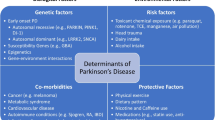Abstract
Chronic ataxia is a relatively common symptom in children. There are numerous causes of chronic ataxia, making it difficult to derive a diagnosis in a timely manner. We hypothesized that the efficiency of the diagnostic process can be improved with systematic analysis of clinical features in pediatric patients with chronic ataxia. Our aim was to improve the efficiency of the diagnostic process in pediatric patients with chronic ataxia. A cohort of 184 patients, aged 0–16 years with chronic ataxia who received medical care at Winnipeg Children’s Hospital during 1991–2008, was ascertained retrospectively from several hospital databases. Clinical details were extracted from hospital charts. The data were compared among the more common diseases using univariate analysis to identify pertinent clinical features that could potentially improve the efficiency of the diagnostic process. Latent class analysis was then conducted to detect unique patterns of clinical features and to determine whether these patterns could be associated with chronic ataxia diagnoses. Two models each with three classes were chosen based on statistical criteria and clinical knowledge for best fit. Each class represented a specific pattern of presenting symptoms or other clinical features. The three classes corresponded to a plausible and shorter list of possible diagnoses. For example, developmental delay and hypotonia correlated best with Angelman syndrome. Specific patterns of presenting symptoms or other clinical features can potentially aid in the initial assessment and diagnosis of pediatric patients with chronic ataxia. This will likely improve the efficiency of the diagnostic process.
Similar content being viewed by others
Abbreviations
- AIC:
-
Akaike information criteria
- BIC:
-
Bayesian information criteria
- HIE:
-
Hypoxic ischemic encephalopathy after birth
- JS:
-
Joubert syndrome and related disorders
- LCA:
-
Latent class analysis
- NCL:
-
Neuronal ceroid lipofuscinosis
- NMD:
-
Neuronal migration disorders
- NYD:
-
Not yet diagnosed
- SAS:
-
Statistical analysis system
References
Salman MS, Lee EJ, Tjahjadi A, Chodirker BN. The epidemiology of intermittent and chronic ataxia in children in Manitoba, Canada. Dev Med Child Neurol. 2013;56:341–7.
Shevell M, Bernard G. The wobbly child: an approach to inherited ataxias. Semin Pediatr Neurol. 2008;15:194–208.
Pandolfo M, Manto M. Cerebellar and afferent ataxias. Continuum (Minneap Minn). 2013;19:1312–43.
Lopez-Bastida J, Perestelo-Perez L, Monton-Alvarez F, Serrano-Aguilar P. Social economic costs and health-related quality of life in patients with degenerative cerebellar ataxia in Spain. Mov Disord. 2008;23:212–7.
Mariotti C, Fancellu R, Di Donato S. An overview of the patient with ataxia. J Neurol. 2005;252:511–8.
Esscher E, Flodmark O, Hagberg G, Hagberg B. Non-progressive ataxia: origins, brain pathology, and impairments in 78 Swedish children. Dev Med Child Neurol. 1996;38:285–96.
Poretti A, Wolf NI, Boltshauser E. Differential diagnosis of cerebellar atrophy in childhood. Eur J Paediatr Neurol. 2008;12:155–67.
Poretti A, Boltshauser E, Doherty D. Cerebellar hypoplasia: differential diagnosis and diagnostic approach. Am J Med Genet. 2014;166C:211–26.
Palau F, Espinos C. Autosomal recessive cerebellar ataxias. Orphanet J Rare Dis. 2006;1:47.
Delatycki MB, Corben LA. Clinical features of Friedreich ataxia. J Child Neurol. 2012;27:1133–7.
Salman MS, Chodirker BN, Bunge M. Neuroimaging findings and repeat neuroimaging value in pediatric chronic ataxia. Can J Neurol Sci 2016; Mar 4:1–9.
Salman MS, Masood S, Azad M, Chodirker BN. Ethnicity and geographic distribution of pediatric chronic ataxia in Manitoba. Can J Neurol Sci. 2014;41:29–36.
Brinkley-Rubinstein L, Craven K. A latent class analysis of stigmatizing attitudes and knowledge of HIV risk among youth in South Africa. PLoS One. 2014;9:e89915.
Blom EH, Forsman M, Yang TT, Serlachius E, Larsson JO. Latent classes of symptoms related to clinically depressed mood in adolescents. Scand J Child Adolesc Psychiatr Psychol. 2014;2:19–28.
Lanza ST, Collins LM, Lemmon DR, Schafer JL. PROC LCA: a SAS procedure for latent class analysis. Struct Equ Modeling. 2007;14:671–94.
Levinson W, Kallewaard M, Bhatia RS, Wolfson D, Shortt S, Kerr EA. ‘Choosing Wisely’: a growing international campaign. BMJ Qual Saf. 2015;24:167–74.
Malhotra A, Maughan D, Ansell J, Lehman R, Henderson A, Gray M, et al. Choosing Wisely in the UK: the Academy of Medical Royal Colleges’ initiative to reduce the harms of too much medicine. BMJ. 2015;350:h2308.
Williams CA, Driscoll DJ, Dagli AI. Clinical and genetic aspects of Angelman syndrome. Genet Med. 2010;12:385–95.
Woods CG, Taylor AM. Ataxia telangiectasia in the British Isles: the clinical and laboratory features of 70 affected individuals. Q J Med. 1992;82:169–79.
Vedanarayanan VV. Mitochondrial disorders and ataxia. Semin Pediatr Neurol. 2003;10:200–9.
Parker CC, Evans OB. Metabolic disorders causing childhood ataxia. Semin Pediatr Neurol. 2003;10:193–9.
Poretti A, Boltshauser E, Huisman TA. Congenital brain abnormalities: an update on malformations of cortical development and infratentorial malformations. Semin Neurol. 2014;34:239–48.
Brodtkorb E, Nilsen G, Smevik O, Rinck PA. Epilepsy and anomalies of neuronal migration: MRI and clinical aspects. Acta Neurol Scand. 1992;86:24–32.
Jen J, Kim GW, Baloh RW. Clinical spectrum of episodic ataxia type 2. Neurology. 2004;62:17–22.
Jadav RH, Sinha S, Yasha TC, Aravinda H, Gayathri N, Rao S, et al. Clinical, electrophysiological, imaging, ultrastructural description in 68 patients with neuronal ceroid lipofuscinoses and its subtypes. Pediatr Neurol. 2014;50:85–95.
Poretti A, Huisman TA, Scheer I, Boltshauser E. Joubert syndrome and related disorders: spectrum of neuroimaging findings in 75 patients. AJNR Am J Neuroradiol. 2011;32:1459–63.
Acknowledgments
We thank the Manitoba Medical Service Foundation and The Health Science Centre Foundation for their financial support as well as The Children’s Hospital Research Institute of Manitoba and The Children Hospital Foundation of Manitoba for providing the infrastructure needed for the project and for their financial support.
Author information
Authors and Affiliations
Corresponding author
Ethics declarations
Conflict of Interest
The authors declare that they have no conflict of interest.
Electronic Supplementary Material
Below is the link to the electronic supplementary material.
ESM 1
(DOCX 48 kb)
Rights and permissions
About this article
Cite this article
Klassen, S., Dufault, B. & Salman, M.S. Can Latent Class Analysis Be Used to Improve the Diagnostic Process in Pediatric Patients with Chronic Ataxia?. Cerebellum 16, 348–357 (2017). https://doi.org/10.1007/s12311-016-0810-0
Published:
Issue Date:
DOI: https://doi.org/10.1007/s12311-016-0810-0




